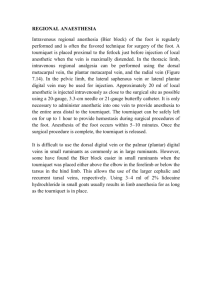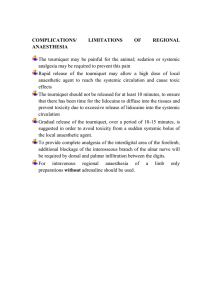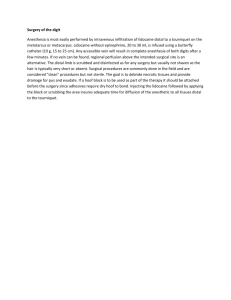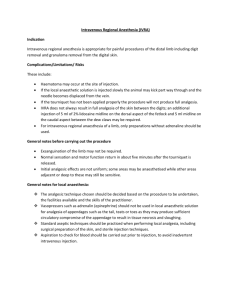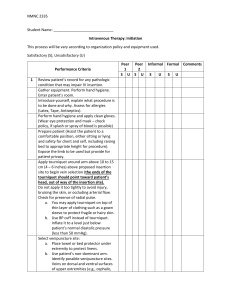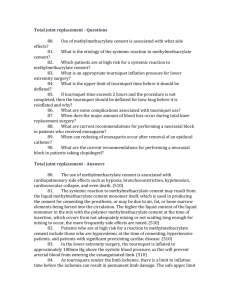Intravenous regional local anesthesia
advertisement
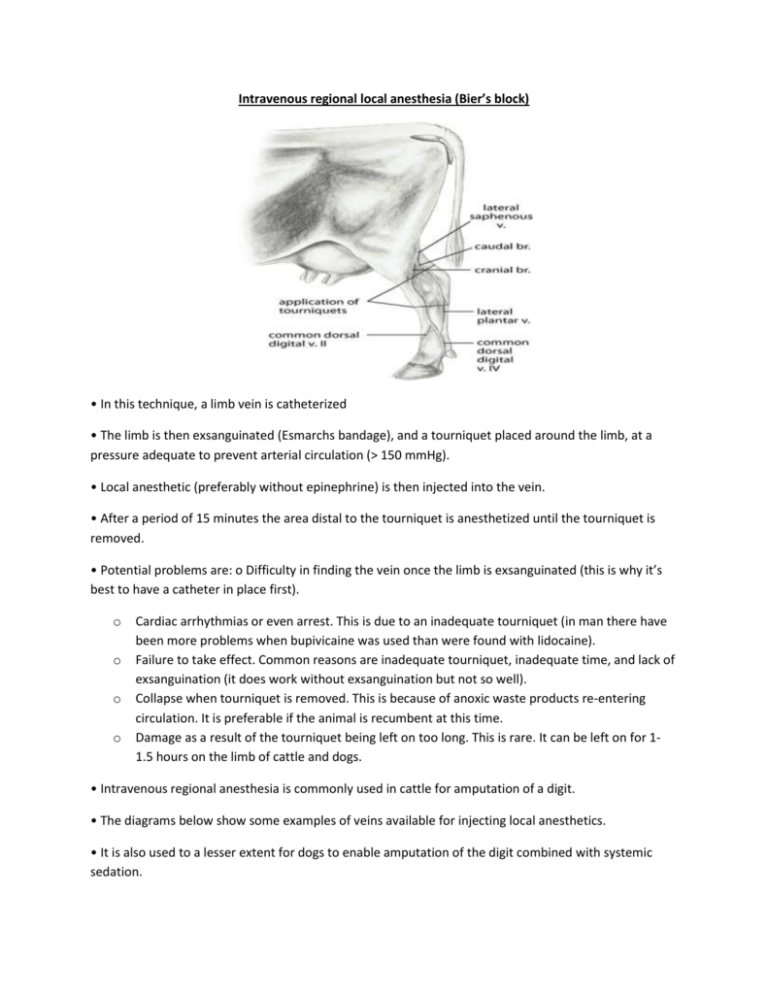
Intravenous regional local anesthesia (Bier’s block) • In this technique, a limb vein is catheterized • The limb is then exsanguinated (Esmarchs bandage), and a tourniquet placed around the limb, at a pressure adequate to prevent arterial circulation (> 150 mmHg). • Local anesthetic (preferably without epinephrine) is then injected into the vein. • After a period of 15 minutes the area distal to the tourniquet is anesthetized until the tourniquet is removed. • Potential problems are: o Difficulty in finding the vein once the limb is exsanguinated (this is why it’s best to have a catheter in place first). o o o o Cardiac arrhythmias or even arrest. This is due to an inadequate tourniquet (in man there have been more problems when bupivicaine was used than were found with lidocaine). Failure to take effect. Common reasons are inadequate tourniquet, inadequate time, and lack of exsanguination (it does work without exsanguination but not so well). Collapse when tourniquet is removed. This is because of anoxic waste products re-entering circulation. It is preferable if the animal is recumbent at this time. Damage as a result of the tourniquet being left on too long. This is rare. It can be left on for 11.5 hours on the limb of cattle and dogs. • Intravenous regional anesthesia is commonly used in cattle for amputation of a digit. • The diagrams below show some examples of veins available for injecting local anesthetics. • It is also used to a lesser extent for dogs to enable amputation of the digit combined with systemic sedation.
